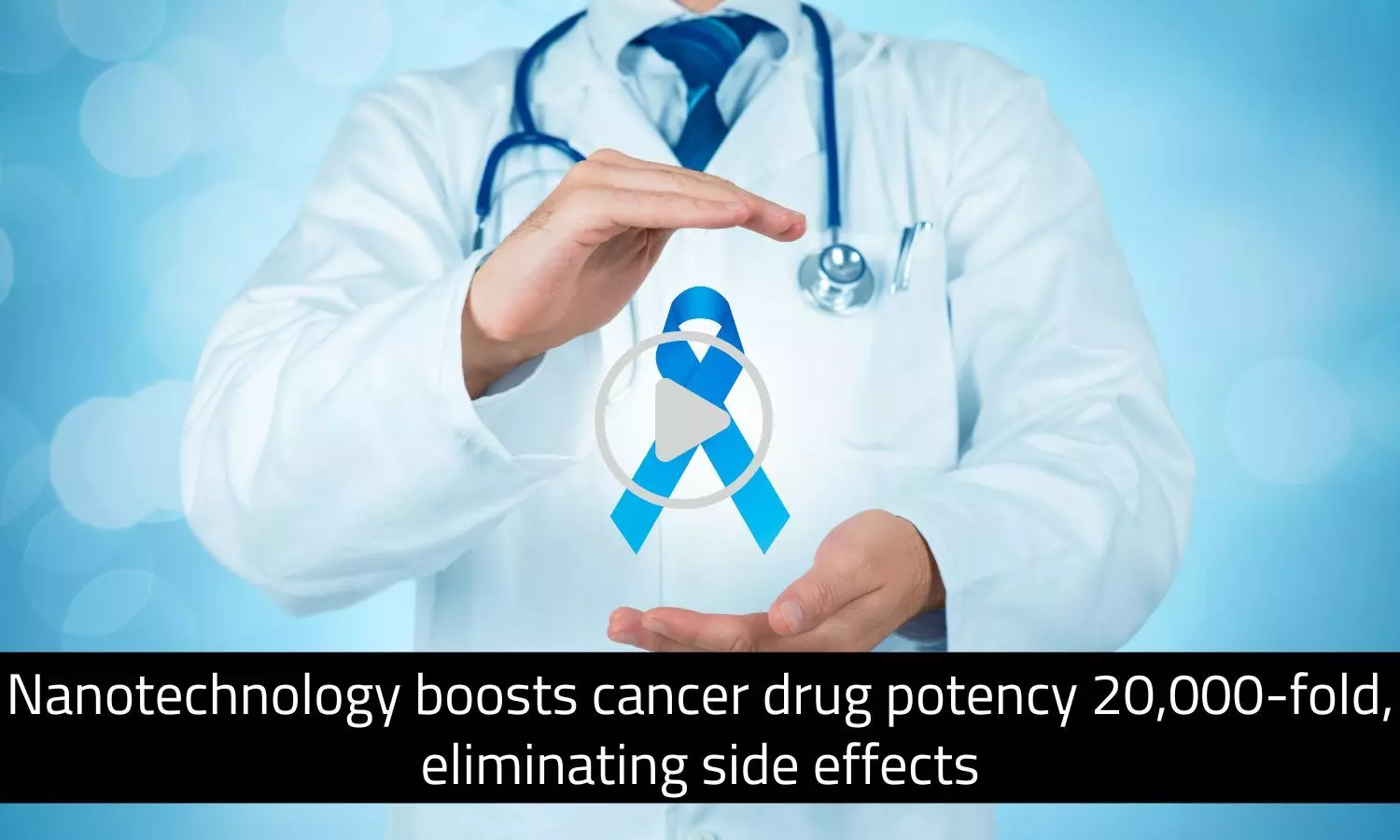Nanotechnology boosts cancer drug potency 20,000-fold, eliminating side effects: Recent research shows
- byDoctor News Daily Team
- 07 November, 2025
- 0 Comments
- 0 Mins

Scientists at Northwestern University have achieved a groundbreaking advance by redesigning a classic chemotherapy drug, 5-fluorouracil (5-Fu), into a novel nanoparticle formulation that dramatically enhances its potency and safety. Published inACS Nanoon October 29, 2025, this research exemplifies the emerging field of structural nanomedicine, which engineers drug architecture at the nanoscale to improve delivery and therapeutic efficacy. 5-Fu is traditionally limited by poor solubility and low cellular uptake, resulting in suboptimal cancer cell targeting and significant toxicity to healthy cells. To overcome these challenges, Professor Chad A. Mirkin’s team synthesized spherical nucleic acid (SNA) nanostructures by integrating chemotherapy molecules directly into the DNA strands coating tiny spherical nanoparticles. These SNAs exploit natural scavenger receptors, particularly abundant on myeloid leukemia cells, to enable highly selective and efficient drug internalization. The researchers employed sophisticated chemical synthesis to attach 5-Fu molecules to oligonucleotides, which were then assembled onto phospholipid core liposomes, forming the SNA architecture. The new formulation was rigorously tested in animal models of acute myeloid leukemia (AML), a rapidly progressing and difficult-to-treat blood cancer. Remarkably, SNA-5-Fu entered leukemia cells 12.5 times more efficiently than conventional 5-Fu, exhibited up to 20,000-fold greater cytotoxicity, and slowed cancer advancement by a factor of 59. Importantly, this potent therapeutic effect occurred with no detectable damage to healthy tissues or overt side effects, a significant improvement over standard chemotherapy’s harsh profile. Professor Mirkin described the breakthrough as a potential paradigm shift that transforms weak, toxic chemotherapy agents into precision nanomedicines with improved outcomes. With multiple SNA drugs already in clinical trials, this pioneering approach may soon extend beyond cancer to tackle infections, neurodegenerative diseases, and autoimmune disorders—ushering in a safer, more effective era of drug design and delivery. REFERENCE: Taokun Luo, Young Jun Kim, Zhenyu Han, Jeongmin Hwang, Sneha Kumari, Vinzenz Mayer, Alex Cushing, Roger A. Romero, Chad A. Mirkin. Chemotherapeutic Spherical Nucleic Acids. ACS Nano, 2025; DOI: 10.1021/acsnano.5c16609
Disclaimer: This website is designed for healthcare professionals and serves solely for informational purposes.
The content provided should not be interpreted as medical advice, diagnosis, treatment recommendations, prescriptions, or endorsements of specific medical practices. It is not a replacement for professional medical consultation or the expertise of a licensed healthcare provider.
Given the ever-evolving nature of medical science, we strive to keep our information accurate and up to date. However, we do not guarantee the completeness or accuracy of the content.
If you come across any inconsistencies, please reach out to us at
admin@doctornewsdaily.com.
We do not support or endorse medical opinions, treatments, or recommendations that contradict the advice of qualified healthcare professionals.
By using this website, you agree to our
Terms of Use,
Privacy Policy, and
Advertisement Policy.
For further details, please review our
Full Disclaimer.
Recent News
Scientists successfully reverse anxiety by restori...
- 07 November, 2025
Nanotechnology boosts cancer drug potency 20,000-f...
- 07 November, 2025
Smart hydrogel mimics skin repair to accelerate di...
- 07 November, 2025
Daily Newsletter
Get all the top stories from Blogs to keep track.


0 Comments
Post a comment
No comments yet. Be the first to comment!